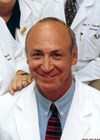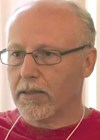Audiology features
A tribute to Mead C Killion, PhD 1939-2025
The renowned audiologist and inventor Mead Killion passed away comfortably on 3 November 2025 in Elkhorn, Wisconsin, US. Mead was known for inventing products that left us scratching our heads, trying to figure out why we hadn’t thought of them...
The Apple effect: could Apple’s involvement redefine the future of hearing aid technology?
As Apple enters hearing health, this article explores how its tech may reduce stigma and reshape hearing care, without replacing clinical expertise. As hearing health professionals, we are all acutely aware of the gap between prevalence of hearing loss and...
Celebrating 25 years of the UST Audiology Program: a landmark audiology school in the Philippines
From pioneering roots to global recognition, UST’s Audiology Program has shaped hearing healthcare in the Philippines for 25 years – and is still evolving. A quarter century of excellence in audiology education Marking its silver anniversary in 2024, the University...
Pioneering standards of aural care in the UK: vision and initiatives of the NACSG
Ear wax removal remains a controversial subject in the UK. How will a strategy group support reform in the sector? Background: elevating standards in aural care The National Aural Care Strategy Group (NACSG) was established to address the multifaceted challenges...
Where Art meets Science (and earplugs): a tale of acoustics, aesthetics and audiology
For the fifth cover in the Art meets Science series, we celebrate not only the fusion of audiology and art, but also friendship, nature and the kind of collaboration that reaches far beyond the clinic walls. My colleague and dear...
Genetic foundations of Ménière’s disease: changing the game
Sydney researchers reveal genetic roots of Ménière’s disease. Familial patterns and gene discoveries highlight autosomal inheritance in rare cases, transforming molecular insights. Ménière’s disease (MD) is a chronic disorder of the inner ear defined by clinical criteria of episodic vertigo...
Enhancing care for adults with auditory neuropathy spectrum disorder
It’s time to improve and personalise care for adults with ANSD. Knowing the lesion site could open up treatment opportunities like cochlear implants or new cell therapies. Auditory neuropathy spectrum disorder (ANSD) comprises a group of hearing disorders characterised by...
Balance and fall prevention in individuals with hearing impairments: clinical insights
Exploring how hearing loss heightens fall risk and how integrated audiologic, vestibular and technological strategies can transform balance care and prevention. Hearing impairment is one of the most common chronic health conditions worldwide, affecting an estimated 466 million people according...
OBITUARY: Remembering Thomas J Balkany 1948 - 2025
Helen Cullington, our Specialty Editor – Audiology (implantables), pays tribute to a pioneer. Back in 1996 – having worked as a cochlear implant audiologist for three years in the UK – I felt ready for a new challenge. I faxed(!)...
A return to digital delay and lip reading
Hearing aid + accessory + smartphone app = a ‘synching’ feeling? Marshall Chasin explains why patients might be losing the rhythm. The historical literature (at least going back to some of the classic texts in the 1960s) is full of...
The art of hearing: a conversation between silence and colour
The image on the ENT & Audiology News September/October 2025 cover is not merely an artwork – it is a conversation. A conversation in colour. A dialogue between silence and sound, between science and emotion. It is part of a...
Why, and how, audiologists should measure language ability: introducing AudiCloze
A cloze test uses missing ______ to assess language ability.How can audiologists measure ______ to help assess listening difficulties? Language ability and listening difficulties While it seems like stepping onto someone else’s turf, there is a strong need for audiologists...

















